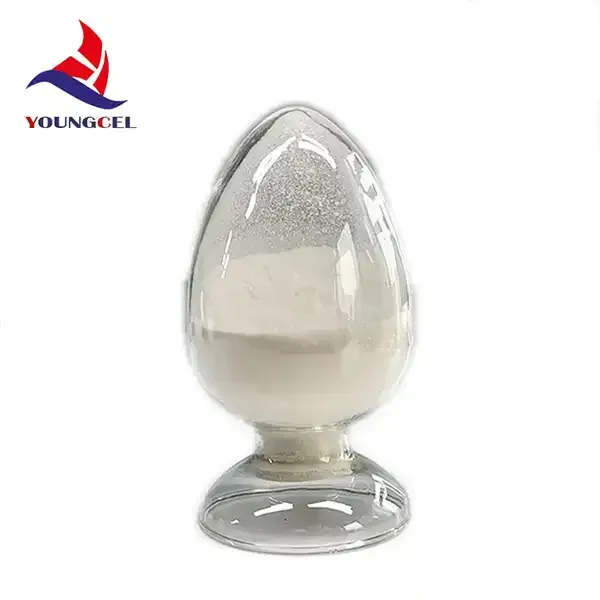Understanding HEMC A Key Player in the Chemical Industry
In the vast landscape of the chemical industry, various compounds play pivotal roles in facilitating numerous industrial processes and applications. One such compound that has garnered attention in recent years is Hydroxyethyl Methyl Cellulose (HEMC). This article aims to explore the properties, applications, and significance of HEMC in today’s technological environment.
What is HEMC?
Hydroxyethyl Methyl Cellulose is a cellulose ether derived from natural cellulose, which is obtained from various plant sources. The chemical structure of HEMC comprises hydroxyethyl and methyl groups, which confer unique properties upon the compound. This modification enhances its solubility in water and changes its rheological properties, making it an exceptional additive across a range of industries. The synthesis of HEMC typically involves the reaction of cellulose with ethylene oxide and methyl chloride.
Key Properties of HEMC
The properties of HEMC make it highly versatile and desirable for numerous applications. Here are some of its notable characteristics
1. Water Solubility HEMC is readily soluble in water, forming a clear and viscous solution. This property is critical for its use in construction materials, paints, and various formulations.
2. Thickening Agent Due to its ability to modify viscosity, HEMC acts as an effective thickening agent. This makes it invaluable in applications ranging from adhesive formulations to personal care products.
3. Film-Forming Characteristics HEMC can form a flexible film upon drying, which is essential for applications in coatings and sealants. This film acts as a barrier, providing protection and enhancing adhesion.
.
5. Biocompatibility Because it is derived from natural cellulose, HEMC is often recognized for its biocompatibility, making it suitable for pharmaceutical and food applications.
hemc

Applications of HEMC
HEMC is employed across a broad range of industries, reflecting its versatility
1. Construction Industry HEMC is widely used in cement-based materials like mortars and plasters. It improves workability, water retention, and adhesion, contributing to longer-lasting and more durable constructions.
2. Paints and Coatings In the paint industry, HEMC serves as a thixotropic agent that enhances the viscosity of the paint, preventing sagging during application and ensuring an even finish.
3. Personal Care Products HEMC is a key ingredient in cosmetics and toiletries. Its thickening and emulsifying properties are used in lotions, shampoos, and creams, improving texture and stability.
4. Pharmaceutical Applications In the pharmaceutical industry, HEMC is used as a binder in tablets and as a drug delivery agent due to its controlled release properties.
5. Food Industry As a food additive, HEMC can act as a thickener or stabilizer in various products, enhancing texture while ensuring food safety and quality.
Significance and Future Prospects
The significance of HEMC cannot be overstated. Its adaptability and unique properties make it an essential compound in numerous applications, highlighting the continuous demand for multifunctional additives in modern industries. Looking ahead, as sustainability trends gain momentum, there will likely be increased interest in natural and biodegradable additives like HEMC. Moreover, ongoing research may lead to innovative applications and formulations, further expanding HEMC's footprint in the chemical market.
In conclusion, Hydroxyethyl Methyl Cellulose stands as a cornerstone of the chemical industry, demonstrating its importance through various applications and indispensable properties. As industries evolve and seek sustainable solutions, HEMC’s role is poised to become even more significant, setting the stage for future advancements and contributions to diverse fields.
-
Rdp Powder: Key Considerations for Wholesalers in the Building Materials IndustryNewsJul.08,2025
-
Key Considerations for Wholesalers: Navigating the World of Hpmc - Based ProductsNewsJul.08,2025
-
Hpmc Detergent: Key Considerations for WholesalersNewsJul.08,2025
-
Key Considerations for Wholesalers: China Hpmc For Tile Adhesive, Coating Additives, Concrete Additives, and MoreNewsJul.08,2025
-
Crucial Considerations for Wholesalers: Navigating the World of Construction MaterialsNewsJul.08,2025
-
Key Considerations for Wholesalers Sourcing Additive For Cement, Additive For Concrete, Additive For Putty from Additive Manufacturer Shijiazhuang Gaocheng District Yongfeng Cellulose Co., Ltd.NewsJul.08,2025




